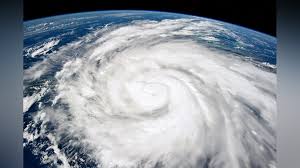As meteorologists issue their forecasts for the upcoming 2024 Atlantic hurricane season, a sense of trepidation looms over coastal communities. According to top forecasters from Colorado State University, including Phil Klotzbach, the stage is set for an “extremely active” season, with a record-breaking prediction of 23 named storms, 11 hurricanes, and five major hurricanes. This unprecedented forecast marks the highest number of hurricanes ever predicted in an April forecast since the inception of Colorado State’s predictions in 1995, signaling potential challenges and urging communities to prepare for the worst.
The forecast’s basis lies in a convergence of factors, including exceptionally warm Atlantic water temperatures and the anticipated transition to La Niña conditions. These environmental conditions provide fertile ground for tropical storm formation and intensification, raising concerns about the potential impact on coastal regions. While the average annual tally stands at 14 tropical storms and seven hurricanes, the forecasted figures far exceed these norms, underscoring the severity of the predicted season.
Preparations for the looming hurricane season are underway, with meteorological agencies and emergency management authorities intensifying efforts to enhance resilience and readiness. However, the magnitude of the forecasted activity poses significant challenges, necessitating a comprehensive approach to disaster preparedness and response. From bolstering infrastructure to implementing evacuation plans and strengthening communication networks, communities must mobilize resources and coordinate efforts to mitigate the potential consequences of a highly active hurricane season.
The forecast’s implications extend beyond the realm of meteorology, resonating with broader discussions surrounding climate change and its impact on extreme weather events. The intensification of hurricanes and the increasing frequency of extreme weather phenomena underscore the urgent need for proactive measures to address climate-related vulnerabilities and build adaptive capacity. As sea surface temperatures continue to rise and atmospheric conditions evolve, the resilience of coastal communities becomes increasingly paramount in safeguarding lives and livelihoods.
Moreover, the forecast serves as a poignant reminder of the legacy of pioneering meteorologist Bill Gray, whose contributions to seasonal hurricane outlooks continue to shape contemporary forecasting methodologies. Reflecting on Gray’s mentorship and his enduring influence, forecasters acknowledge the magnitude of the task at hand while honoring his legacy through their dedication to advancing predictive capabilities and enhancing public awareness.
As the countdown to the 2024 hurricane season commences, communities along vulnerable coastlines must heed the forecast’s warning and take proactive measures to mitigate risks and protect lives. From investing in resilient infrastructure to fostering community resilience and promoting climate adaptation strategies, collective action is essential in confronting the challenges posed by an increasingly volatile climate. By prioritizing preparedness, collaboration, and innovation, coastal communities can navigate the forecasted deluge with resilience and determination, ensuring a safer and more sustainable future for all.
